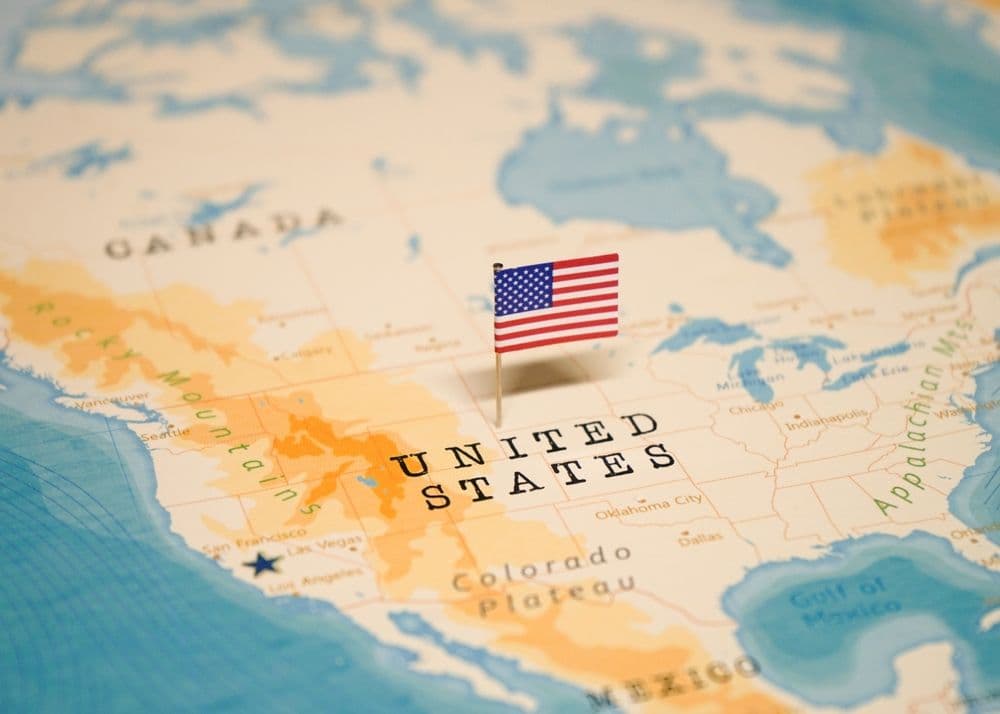 The planned $1.5 billion treasury firm is set to list on Nasdaq, serving mainly as a holding entity for WLFI tokens. (Brian Jason/Shutterstock)
The planned $1.5 billion treasury firm is set to list on Nasdaq, serving mainly as a holding entity for WLFI tokens. (Brian Jason/Shutterstock)Founded in 2024, World Liberty Financial emerged as a Trump family–linked DeFi venture. The Trump-controlled entity initially held a 60% stake and claimed 75% of token-sale revenue. The WLFI governance token launched in October 2024, raising just $2.7 million early on. By early 2025, following subsequent public token sales, WLF had raised around $550 million. The Trump family received 22.5 billion WLFI tokens, governance tokens entitling holders to voting rights, not ownership equity.
In March 2025, WLF introduced USD1, a dollar-pegged stablecoin backed by U.S. treasuries and cash equivalents. Early adoption was rapid, with USD1 reaching $2.1 billion in circulation by April 2025. The project attracted substantial foreign capital: Chinese crypto entrepreneur Justin Sun invested at least $30 million in WLFI and later integrated USD1 with his Tron blockchain platform. Supporters of the project point to WLF’s rapid fundraising and the growth of USD1 as evidence of strong demand for politically branded digital assets. They argue that the company’s expansion into both governance tokens and a widely used stablecoin positions it uniquely within the crypto sector, potentially bridging the gap between retail crypto adoption and traditional finance participation.
WLFI tokens, up until recently non-transferable governance assets, underwent a notable shift. A community vote in mid-July saw over 99 percent support for making WLFI tradeable on secondary markets, although tokens held by founders and advisors would remain locked initially. WLF also committed to releasing a stablecoin audit and hinted at a forthcoming retail app to expand user access. Secondary trading of WLFI could attract a broader investor base and improve price discovery. Liquidity in governance tokens can be highly sensitive to market sentiment, so early trading periods may still see significant volatility. By phasing in token unlocks for founders and advisors, WLF aims to reduce the risk of sudden supply shocks.
Throughout WLF’s rapid rise, ethical concerns have been a recurring theme. Critics have warned that the venture blurs the line between private profit and public policy in unprecedented ways. A Trump financial disclosure indicates he earned about $57 million in 2024 from WLF token sales. Lawmakers have responded with proposals to bar political figures from promoting or profiting from cryptocurrencies. In June, Senator Adam Schiff introduced the COIN Act, a Senate bill that would bar the president, vice president, and their close relatives from issuing, promoting, or profiting from cryptocurrencies, including stablecoins, while in office. Though the measure aims to rein in digital‑asset conflicts of interest, its success is uncertain amid a political climate wary of imposing limits on presidential crypto activity.
The proposed $1.5 billion treasury company would be listed on Nasdaq and operate primarily as a holding vehicle for WLFI tokens. This structure could give institutional and retail investors indirect exposure to the governance token without requiring them to participate directly in the DeFi ecosystem. Similar models have been used by firms holding large bitcoin or ether reserves, offering a regulated market framework for otherwise volatile digital assets.
As WLF considers creating a $1.5 billion publicly listed treasury entity to hold WLFI tokens, the initiative could represent a significant step in the project’s development. The planned introduction of secondary trading may improve liquidity and market access, while the forthcoming stablecoin audit is expected to provide additional transparency. The venture continues to operate in a closely watched regulatory environment, with its progress likely influenced by broader policy developments and market conditions.

OpenAI hits “code red” as pressure rises on ChatGPT

Digital rand paused as SARB sees no urgent need

Texas becomes the first U.S. state to purchase bitcoin

Digital Chamber launches statewide crypto policy push